"I've done every medical test and consulted with many specialists, but I still can't breathe right." Many people experience unexplained breathlessness that isn't caused by disease, but by breathing dysfunction and low CO2 levels.
You have done all the right things. You've had your heart checked, lungs scanned, blood drawn, and stress tests completed, Your doctor says everything looks normal. So why are you still feeling breathless, dizzy, fatigue, anxious, or irritable?
If you feel you are running out of air for no clear reason, you're not alone. Many people experience unexplained breathlessness that isn't caused by disease, but by breathing dysfunction and low CO2 levels. In this article, we explore how disrupted breathing patterns, influenced by behaviors, can cause real physiological distress- even when something 'looks fine' on paper.
Shortness of Breath Is Not Always A Lung or Heart Issue
- Common tests involve spirometry, chest X-rays, ECG.
- Conventional tests are geared to rule out disease but miss functional breathing issues.
- Breathing behaviors are not typically addressed.
- Functional breathlessness can be influenced by emotion, perception, memories, trauma.
- Disordered breathing can configure based on stress levels and type of activity.
- Shallow, chest dominant breathing is not normal and it can cause dynamic lung hyperinflation, leading to a sense of suffocation.
Dysfunctional Breathing Could Be The Hidden Culprit
- Chronic silent hyperventilation, subject to principle of learning just like any behavior, is one of the most overlooked areas in medicine and rehabilitation.
- Shallow breathing increases the likelihood of creating acid-base disturbances caused by CO2 depletion. This causes airway resistance and effort of breathing.
Normal Medical Tests Don't Always Mean Normal Breathing
Medical tests are excellent at identifying diseases like anemia, asthma, heart failure, or lung infections. However, these tests often miss subtle dysfunction in how you breathe. This is especially true when symptoms are not caused by disease but by breathing behaviors. These types of functional imbalances are referred to as:
- Functional breathlessness
- Chronic hyperventilation
- Breathing pattern disorder
- CO2 depletion syndrome
These aren't necessarily diagnosable diseases. They are patterns that are often triggered by stress, trauma, and learned habits.
Understanding Breathing Dysfunction and Low CO2
Dysfunctional breathing (DB) refers to irregular breathing patterns that occur either in the absence of concurrent diseases or secondary to cardiopulmonary diseases. Although the primary symptom is often dyspnea or "air hunger," dysfunctional breathing is also associated with non-respiratory symptoms such as dizziness, anxiety, irritability, and palpitations. Dysfunctional breathing has been identified across all ages. Its prevalence among adults is more common in women.
When breathing becomes rapid or deep, a state known as hyperventilation, the body expels CO2 faster than it is produced. This reduction in CO2 levels can lead to a condition called respiratory alkalosis, where the blood becomes too alkaline. The body relies on a delicate balance of oxygen and CO2 to regulate various physiological functions, including the drive to breathe.
How Low CO2 Levels Contribute to Shortness of Breath
Low CO2 levels can cause the blood vessels in the brain to constrict, leading to symptoms such as dizziness and lightheadedness. Additionally, the resultant respiratory alkalosis can increase neuronal excitability, leading to tingling sensations, muscle cramps, and, in extreme situations, seizures. This sensation of breathlessness can prompt individuals to breathe even more rapidly, perpetuating a cycle of hyperventilation and worsening symptoms.
Common Symptoms Associated with Low CO2 Levels
Beyond shortness of breath, reduced CO2 levels can manifest in various ways, including:
Dizziness or lightheadedness: Due to constricted blood vessels in the brain.
Tingling sensations: Often felt in the hands, feet, or around the mouth.
Chest discomfort: A feeling of tightness or pain.
Rapid heartbeat (palpitations): An increased awareness of the heart beating.
Anxiety or panic: Feelings of impending doom or excessive worry.
The Stress-Breathing Connection
- Chronic stress and trauma may be encoded in dysfunctional breathing patterns.
- Increased and ongoing state of arousal or fight-or-flight can cause breathing dysfunction.
- Mouth breathing and shallow breathing caused by stress can exacerbate the pre-existing breathing dysregulation.
- Hyper-vigilance or state of heighten awareness and alertness is not always evident. This form of sympathetic overdrive can create muscle tension, diaphragm coordination problems, abdominal bracing with rapid reactive breathing.
Managing Dysfunctional Breathing and Restoring CO2 Balance
Addressing breathing dysfunction involves several strategies aimed at normalizing breathing patterns and restoring appropriate CO2 levels:
- Breathing Retraining: Techniques such as diaphragmatic breathing can help promote slower, more controlled breaths, reducing the tendency to hyperventilate.
- Reducing tidal volume (inspired air) to reduce what is referred to dynamic lung hyper-inflation.
- Biofeedback: Utilizing devices that provide real-time feedback on breathing patterns can assist individuals in recognizing and correcting dysfunctional breathing.
Consult With Your Doctor
It is essential for individuals experiencing persistent shortness of breath to consult with healthcare professionals who can assess for dysfunctional breathing patterns and rule out other medical conditions.
Conclusion
Dysfunctional breathing leading to low CO2 levels is a significant yet often under-recognized cause of shortness of breath. By understanding this connection and implementing targeted strategies to restore normal breathing patterns, individuals can alleviate symptoms and improve their quality of life.
At Respiras Breathing, we specialize in uncovering these hidden imbalances and restoring your breathing physiology to improve oxygenation, circulation, and nervous system regulation. We specialize in science-backed breathing therapy and capnographic biofeedback. The latter is a method that helps you track your CO2 levels in real time and helps retrain your breathing to restore balance in your physiology.
Supporting Medical Literature & References
- Lum, L. C. (1975). Hyperventilation: The Tip and the Iceberg. Journal of Psychosomatic Research, 19(5–6), 375–383.
- Thomas, M., McKinley, R. K., & Freeman, E. (2001). The prevalence of dysfunctional breathing in adults in the community with and without asthma. Primary Care Respiratory Journal, 10(1), 37–41.
- Gardner, W. N. (1996). The pathophysiology of hyperventilation disorders. Chest, 109(2), 516–534.
- Courtney, R. (2009). The functions of breathing and its dysfunctions and their relationship to breathing therapy. International Journal of Osteopathic Medicine, 12(3), 78–85.
- Jack, S., Rossiter, H. B., & Ward, S. A. (2010). Ventilatory efficiency and control in chronic breathlessness. Clinical Science, 119(9), 401–412.
Shortness of breath without organic pathology typically reflects disordered breathing and autonomic imbalance. Correcting it at the root restores oxygen delivery, energy, and long-term health. Contact us to see if our program is a good fit for you.













